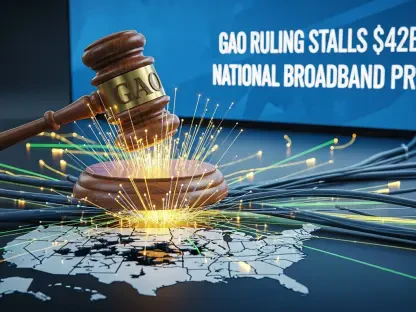In today’s digital era, the ability to record calls on a smartphone has become essential for both personal and professional use. Whether it’s capturing significant conversations, keeping promises made over the phone, or preserving invaluable verbal agreements, this functionality offers convenience and assurance. However, with varying laws across regions and the intricacies of operating systems, the legal landscape surrounding call recording can often seem perplexing. Understanding the step-by-step methods of activating this feature, along with keeping in mind legal constraints and app requirements, can empower users to utilize this tool without breaching privacy regulations.
Navigating through the options for call recording on Android and iPhone requires knowledge of specific device settings, available applications, and legal permissions. While Android users often have native options available on certain models like Samsung and Google’s Pixel, iPhone users encounter restrictive measures. Nonetheless, several workarounds exist. This article explores how to legally enable call recording on these two popular platforms, providing insights into third-party app alternatives and important legal considerations to ensure compliance. By arming oneself with the right information, users can effectively deploy this technology for capturing critical dialogues.
Options for Android Users
On Android devices, users generally have access to more built-in capabilities for recording calls than iPhone users, although these features are subject to regional variations in legal obligations. Proprietary options are readily available on some models, providing an intuitive experience for users. For those utilizing Samsung devices, the setting to automatically record calls can be swiftly activated. By simply accessing the Phone app, clicking on “More,” followed by “Settings,” and selecting “Record calls,” users can toggle the auto-record feature. This feature can also be turned on manually during conversations by using the “Record” button. Note that the availability of these features often depends on the user’s geographical location due to privacy and consent laws.
While users of Google’s Pixel or Stock Android phones may follow a similar procedure during calls, Xiaomi/Redmi phone users can set preferences for all calls or unknown numbers within their settings. When native options fail or are unavailable, third-party applications may provide viable alternatives. Apps such as Cube ACR or Truecaller are popular choices, with the former supporting various communication platforms like WhatsApp and Skype, and the latter offering enhanced functionalities through a subscription service. It is critical to review developer credibility and user testimonials and avoid apps demanding excessive permissions or those that appear dubious, ensuring user privacy is upheld throughout the process.
Solutions for iPhone Users
Apple’s restrictive approach toward call recording has prompted users to explore alternative solutions to enable this feature legally. While no native function directly supports call recording, several workarounds and third-party applications can help achieve the same outcome. Users may resort to using the Voice Memos app in conjunction with speakerphone mode, allowing the recording to capture audio aired during calls. However, this method records only what is audible on the speakerphone, limiting its efficacy in diverse settings. Additional solutions such as Rev Call Recorder can be utilized, wherein calls are conducted through Rev’s app, enabling recording via a conference line.
Google Voice offers another viable option, especially for users in the United States. By enabling incoming call recording in Google Voice’s settings and pressing a designated button during conversations, users can successfully capture calls. Screen recording with audio is an option available in iOS versions 15 or above for some users, although it may notify the other party involved. Users should be cognizant of the limitations of these alternatives, paying close attention to regional laws concerning recording calls. By considering these different methods and their respective constraints, iPhone users can find a suitable approach to recording calls legally and effectively.
Legal and Privacy Considerations
When engaging in call recording, understanding legal frameworks and safeguarding privacy and security is imperative. Regulations concerning call recording widely differ across various jurisdictions, with elements such as consent being a significant factor. In the United States, certain states follow a one-party consent rule, allowing individuals to record conversations as long as one participant is aware. Conversely, all-party consent is required in locations such as California, parts of Australia, and the European Union, necessitating that all involved parties are informed. Mentioning “This call is being recorded” can serve as an alert to ensure compliance and transparency.
In terms of ethical best practices, disclosing recording intentions transparently, securing stored data, and appropriately managing old recordings are crucial steps. Using apps that support end-to-end encryption, like Boldbeast, enhances data privacy by protecting recordings from unauthorized access. Engaging in regular data deletion is also recommended to prevent unwanted retention of information. Maintaining records legally and ethically protects users against potential fines and legal challenges—the Federal Communications Commission in the U.S. has outlined penalties for non-compliance, highlighting the importance of adhering to legal guidelines. Seeking professional legal advice remains prudent, especially for entities involved in cross-border communication.
Troubleshooting and Recommendations
Users may encounter technical hurdles when attempting to record calls, necessitating adept troubleshooting techniques to ensure a successful recording process. A common issue facing Android users is the unavailability of the record button, often influenced by regional restrictions deliberately imposed by manufacturers like Samsung in areas under stringent law. One temporary workaround includes the usage of Virtual Private Networks (VPNs) to alter perceived location settings. However, such steps may void phone warranties and are not recommended without understanding potential repercussions.
Poor audio quality is an often reported problem, commonly resulting from app conflicts or insufficient permissions. Ensuring the recorder app remains active by disabling battery optimization settings may enhance its performance on Android. Confirming that the application has microphone access in the phone settings is another useful step. For iOS users experiencing challenges with available workarounds, updating to the latest iOS version can bolster compatibility with updated app support, thus improving recording capabilities. Following these recommendations and choosing apps wisely can lead to effective call recording solutions across both platforms, providing varied yet dependable options despite initial difficulties.
Conclusion: Embracing the Future of Call Recording
In today’s digital world, the capability to record calls on a smartphone has become a crucial tool for both personal and professional endeavors. Whether you need to capture meaningful conversations, document promises made over the phone, or save priceless verbal agreements, this feature offers ease and peace of mind. However, the legal landscape can be daunting due to differing laws in various areas and the complex nature of operating systems. Understanding how to enable this feature, while considering legal restrictions and app needs, allows users to utilize this tool without violating privacy laws.
Exploring options for call recording on Android and iPhone requires knowledge of device settings, apps, and legal permissions. Android users may find built-in options on certain models like Samsung and Google Pixel, but iPhone users face more limitations. However, workarounds exist. This article outlines how to legally enable call recording on these platforms, discussing third-party app alternatives and crucial legal considerations. Equipped with the right information, users can strategically use this technology to capture critical conversations.









